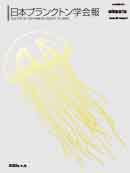69 巻, 2 号
選択された号の論文の22件中1~22を表示しています
- |<
- <
- 1
- >
- >|
追悼
-
2022 年 69 巻 2 号 p. 81-82
発行日: 2022/08/25
公開日: 2022/09/17
PDF形式でダウンロード (1907K)
原著論文
-
2022 年 69 巻 2 号 p. 83-92
発行日: 2022/08/25
公開日: 2022/09/17
PDF形式でダウンロード (925K) -
2022 年 69 巻 2 号 p. 93-101
発行日: 2022/08/25
公開日: 2022/09/17
PDF形式でダウンロード (587K)
研究情報
-
2022 年 69 巻 2 号 p. 102
発行日: 2022/08/25
公開日: 2022/09/17
PDF形式でダウンロード (262K) -
2022 年 69 巻 2 号 p. 102-103
発行日: 2022/08/25
公開日: 2022/09/17
PDF形式でダウンロード (304K) -
2022 年 69 巻 2 号 p. 103
発行日: 2022/08/25
公開日: 2022/09/17
PDF形式でダウンロード (299K) -
2022 年 69 巻 2 号 p. 104
発行日: 2022/08/25
公開日: 2022/09/17
PDF形式でダウンロード (261K) -
2022 年 69 巻 2 号 p. 104-105
発行日: 2022/08/25
公開日: 2022/09/17
PDF形式でダウンロード (296K) -
2022 年 69 巻 2 号 p. 105
発行日: 2022/08/25
公開日: 2022/09/21
PDF形式でダウンロード (289K) -
2022 年 69 巻 2 号 p. 105-106
発行日: 2022/08/25
公開日: 2022/09/17
PDF形式でダウンロード (296K) -
2022 年 69 巻 2 号 p. 106
発行日: 2022/08/25
公開日: 2022/09/17
PDF形式でダウンロード (276K) -
2022 年 69 巻 2 号 p. 107
発行日: 2022/08/25
公開日: 2022/09/17
PDF形式でダウンロード (292K) -
2022 年 69 巻 2 号 p. 107
発行日: 2022/08/25
公開日: 2022/09/17
PDF形式でダウンロード (292K) -
2022 年 69 巻 2 号 p. 107-108
発行日: 2022/08/25
公開日: 2022/09/17
PDF形式でダウンロード (319K) -
2022 年 69 巻 2 号 p. 108
発行日: 2022/08/25
公開日: 2022/09/17
PDF形式でダウンロード (297K)
学会賞
-
2022 年 69 巻 2 号 p. 109-110
発行日: 2022/08/25
公開日: 2022/09/17
PDF形式でダウンロード (2067K) -
2022 年 69 巻 2 号 p. 111
発行日: 2022/08/25
公開日: 2022/09/17
PDF形式でダウンロード (677K)
学位取得者情報
-
2022 年 69 巻 2 号 p. 112-113
発行日: 2022/08/25
公開日: 2022/09/17
PDF形式でダウンロード (875K) -
2022 年 69 巻 2 号 p. 114-116
発行日: 2022/08/25
公開日: 2022/09/17
PDF形式でダウンロード (791K)
Plankton and Benthos Research掲載論文要旨
-
2022 年 69 巻 2 号 p. 117-119
発行日: 2022/08/25
公開日: 2022/09/22
PDF形式でダウンロード (295K)
会務報告
-
2022 年 69 巻 2 号 p. 120-123
発行日: 2022/08/25
公開日: 2022/09/22
PDF形式でダウンロード (207K)
会則
-
2022 年 69 巻 2 号 p. 124-130
発行日: 2022/08/25
公開日: 2022/09/22
PDF形式でダウンロード (267K)
- |<
- <
- 1
- >
- >|
